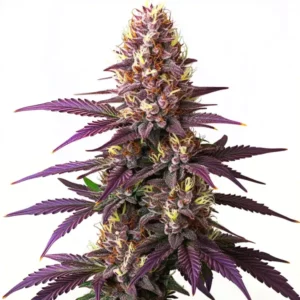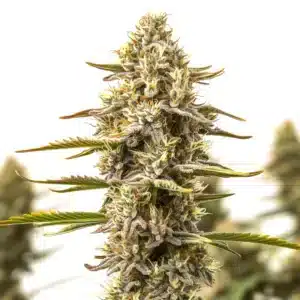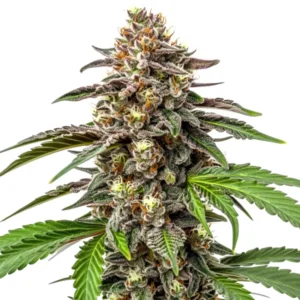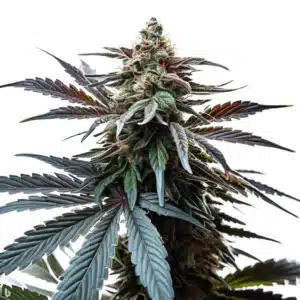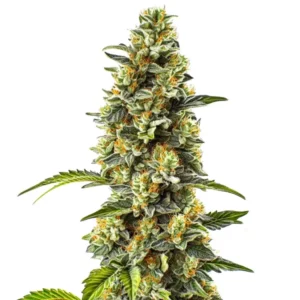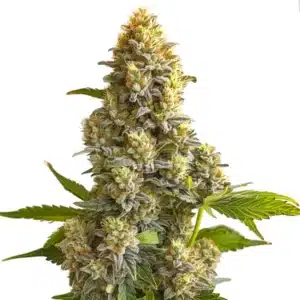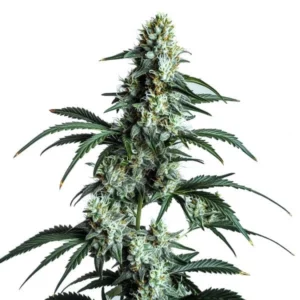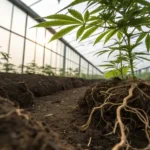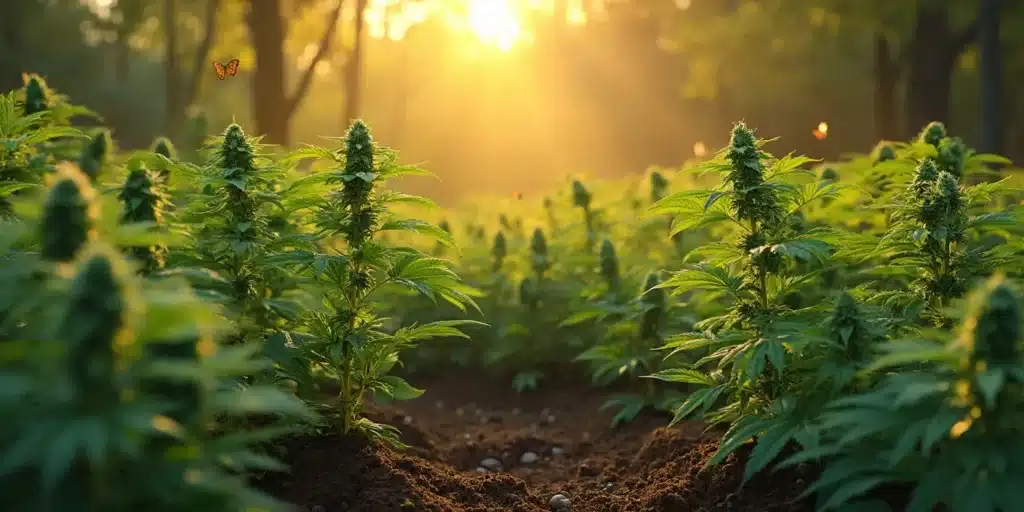
Good Nutrients for Outdoor Grow
Growing cannabis outdoors can be a rewarding and fulfilling venture. With the right guidance and a bit of patience, anyone can cultivate a thriving cannabis garden. Outdoor growing provides a unique opportunity to take advantage of natural sunlight, fresh air, and the diversity of your local ecosystem, all of which can contribute to healthy plant growth. However, understanding the right nutrients your plants need is key to ensuring they thrive throughout their growth cycle. In this guide, we’ll delve into the essential nutrients required for outdoor cannabis cultivation, practical tips for their application, and highlight some recommended strains you might want to consider cultivating.
Essential Nutrients for Cannabis Plants
Cannabis plants, much like all living organisms, require specific nutrients to grow effectively. These nutrients can be divided into two distinct categories: macronutrients, which are needed in larger quantities, and micronutrients, which are necessary in smaller amounts but are equally vital to plant health.
Recommended Strains
Black Widow
|
|
THC | 24% - 28% (High) |
|
|
Type | Feminized |
|
|
Yield | Medium |
|
|
Phenotype | 35% Indica / 65% Sativa |
Blueberry
|
|
THC | 15% - 24% (Medium) |
|
|
Type | Feminized |
|
|
Yield | High |
|
|
Phenotype | 80% Indica / 20% Sativa |
Macronutrients
Macronutrients form the backbone of nutrient requirements for cannabis plants. The three primary macronutrients essential for cannabis growth are:
- Nitrogen (N): This nutrient is crucial for leaf and stem growth, as nitrogen plays a pivotal role in the photosynthesis process that powers cannabis development.
- Phosphorus (P): An essential element for root and flower development, phosphorus aids in energy transfer within the plant and supports complex metabolic processes.
- Potassium (K): This nutrient contributes to overall plant health and resilience against disease, ensuring that the plants can thrive in varying environmental conditions.
Understanding the roles and ratios of these macronutrients is vital. Too much of one can hinder the effectiveness of another, so maintaining a balanced approach to nutrient application is crucial.
These macronutrients can commonly be found in various fertilizers. When purchasing any nutrient products, it’s important to read the labels carefully to determine the right blend tailored for your plants’ development stages. Fertilizers typically have an N-P-K ratio listed on the packaging that indicates the percentage of each macronutrient.
Micronutrients
Micronutrients, although required in smaller amounts, are equally significant for the optimum growth of your cannabis plants. Key micronutrients include:
- Calcium: Offers vital support for strong cell walls and overall structural integrity, contributing to healthy plant development.
- Magnesium: This nutrient is essential for chlorophyll production and photosynthesis, playing a key role in energy conversion.
- Sulfur: Encourages the growth of new tissues and enhances flowering, essential for robust harvest yields.
- Iron: Critical for enzyme functions and vital for chlorophyll production, iron is necessary for the green pigmentation in plants.
Deficiencies in any of these micronutrients can lead to poor plant growth, abnormal leaf development, and ultimately lower yields. Monitoring these levels can aid in recognizing potential issues before they escalate, ensuring a healthy and productive crop.
Promos & Deals
Soil Quality and Nutrients
The quality of your soil directly impacts how well your cannabis plants can access the necessary nutrients. Well-draining, nutrient-rich soil promotes healthy root development and maximizes the potential for your plants to thrive from seedling to harvest.
Choosing the Right Soil

When selecting the ideal soil for outdoor cannabis growth, consider using high-quality organic mixes. These types of soils often retain moisture better and offer a natural source of essential nutrients. Look for potting mixtures that contain elements such as:
- Compost: Rich in organic matter and beneficial bacteria.
- Worm castings: These are nutrient-dense and can enhance soil fertility.
- Perlite or vermiculite: Both promote aeration and ensure proper drainage, vital for healthy root systems.
By utilizing quality soil, you not only provide a solid foundation for your plants but also create an environment that supports beneficial microorganisms. These microbes can help enhance nutrient availability and overall soil health, which is essential for vigorous cannabis growth.
Soil Testing
Regular soil testing is an invaluable practice that helps determine nutrient levels and pH balance in your growing medium. Testing kits are widely available and easy to use, providing quick insights into your soil health. Understanding these factors can help you modify your nutrient application accordingly, ensuring your plants receive balanced nutrition throughout their growth stages.
Moreover, soil tests can identify deficiencies or surpluses of both macronutrients and micronutrients. By regularly testing, you can adapt your feeding regimen to avoid plant stress and optimize growth, leading to abundant yields come harvest time.
Organic Nutrient Options
Many cannabis growers are shifting towards organic nutrients, as these options are environmentally friendly and help improve soil health over time. Here are some effective organic nutrient sources to consider:
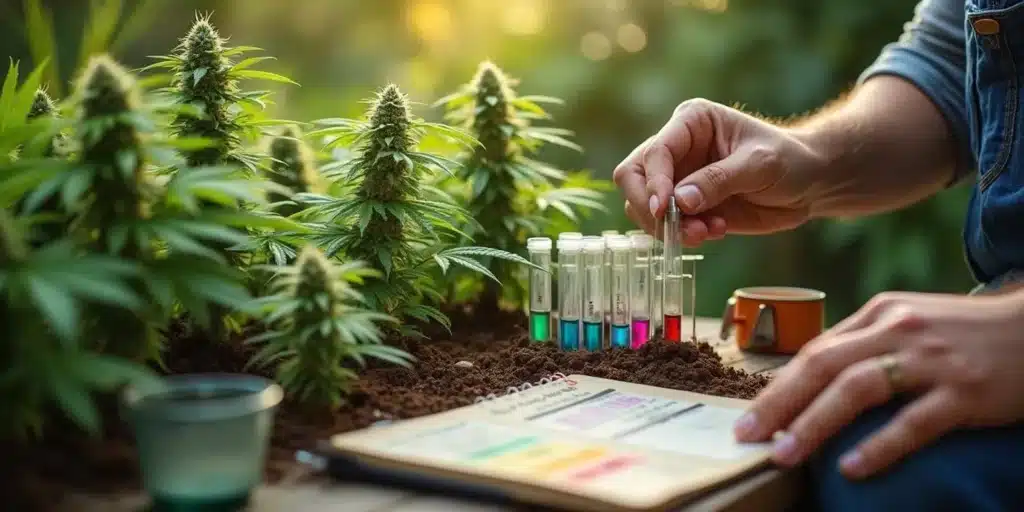
Compost
Compost serves as a fantastic slow-release nutrient source, improving soil structure while providing a spectrum of beneficial nutrients. By mixing your soil with homemade or store-bought compost, you introduce a variety of microorganisms that enrich the soil’s nutrient profile. Consider creating your own compost from kitchen scraps and yard waste for added sustainability.
In addition to providing nutrients, compost improves soil aeration and water retention, letting your cannabis plants access nutrients more effectively. This natural amendment is a key player in cultivating a thriving outdoor cannabis garden.
Fish Emulsion
Fish emulsion is a nutrient-rich liquid made from fish by-products and is an excellent source of nitrogen. This liquid is often used as a foliar spray or diluted with water and applied at the base of the plant. It stimulates rapid growth and is particularly beneficial during the vegetative stage when plants require higher nitrogen levels.
Using fish emulsion provides an array of trace minerals, enhancing not only plant growth but also the overall nutrient profile of your soil. Just be cautious with the quantity; a little goes a long way!
Feeding Schedule for Outdoor Cannabis Plants
Creating a well-structured feeding schedule is imperative for outdoor cannabis cultivation. Regular feeding ensures your plants receive the nutrients they need at key growth stages, paving the path for a healthy and bountiful harvest.
Vegetative Stage
During the vegetative stage, cannabis plants thrive on higher nitrogen levels to support vigorous leaf growth and robust stem development. Use a balanced fertilizer that emphasizes nitrogen concentrations, applying nutrients every few weeks based on the growth response of your plants.
This stage is crucial as it sets the foundation for successful flowering. Monitoring plant health and adjusting your nutrient mix can prevent issues down the line, ensuring that your plants are strong and well-prepared for the upcoming flowering phase.
Flowering Stage
As your plants transition into the flowering phase, it’s essential to shift their nutrient intake towards a higher phosphorus and potassium mixture. These nutrients are vital for supporting bud development and ensuring overall plant health during one of the most critical stages of growth.
Typically, growers switch fertilizers at the beginning of the flowering stage, focusing on nutrient blends that stimulate flowering and fruiting. Pay close attention to your plants; signs of nutrient deficiencies or excesses during this phase can indicate the need for adjustments in their feeding schedule.
Watering and Nutrient Absorption
Water is indispensable for nutrient absorption and plays a significant role in the overall health of your cannabis plants. Proper watering techniques enhance nutrient uptake and help maintain optimal soil structure.
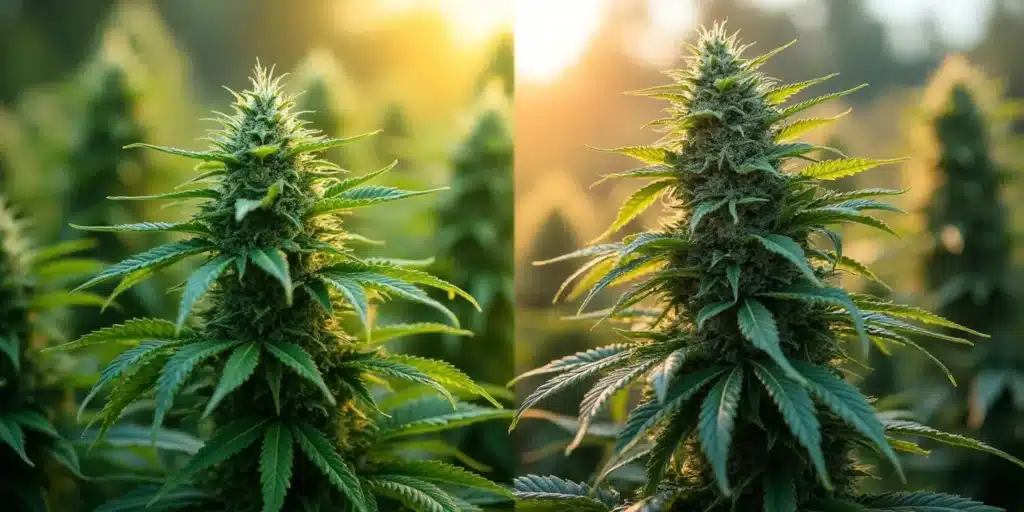
How Much Water to Use
Cannabis plants prefer deep watering to promote a robust root system instead of frequent, shallow watering. A helpful guideline is to check the top inch of soil; if it feels dry, it’s time to water. Ensure you water thoroughly, allowing excess to drain out of the bottom of the pot or planting area.
Be cautious about waterlogging your plants, as it can lead to root rot and other detrimental conditions. Balancing watering practices effectively can lead to healthier plants and higher yields.
Mulching Techniques
Applying mulch around your cannabis plants can yield several benefits, including moisture retention and soil temperature regulation. Organic mulches, such as straw or wood chips, break down over time, adding nutrients back into the soil and enhancing its fertility.
Not only does mulching help in retaining moisture, but it can also suppress weeds that might compete for vital resources and nutrients. This simple gardening practice can make a huge difference in your cannabis plant’s health and yield.
Recommended Cannabis Strains for Outdoor Growing
Choosing the right cannabis strain can significantly influence the success of your outdoor cultivation. Below are three popular strains that have proven to thrive outdoors, each offering unique traits and benefits:
White Widow
A staple in the cannabis community, White Widow is widely known for its hearty growth and resilience in various outdoor conditions. This strain adapts well to different climates, producing robust flower yields and a balanced high that appeals to many cannabis users.
White Widow’s ability to flourish in less-than-ideal conditions makes it a go-to choice for both novice and experienced growers alike. Its strong resistance to pests and diseases is an added bonus for outdoor cultivation.
Blueberry
Blueberry is favored for its sweet aroma and delicious flavor profile. This strain thrives particularly well in warmer outdoor settings and tends to develop stunningly vibrant purple hues during flowering, making it visually appealing in addition to being tasty.
The Blueberry strain usually yields a moderate to high output, and its delightful flavor makes it popular among cannabis enthusiasts. Its hardiness in outdoor environments is another reason many growers opt for Blueberry.
Critical Cheese Auto
Critical Cheese Auto is an excellent strain for beginners, thanks to its vigorous growth and tolerance to various outdoor conditions. This strain produces large, dense buds rich in flavor and aroma, making it an appealing choice for both cultivation and consumption.
Due to its forgiving nature, Critical Cheese Auto is perfect for those new to cannabis gardening. It delivers impressive yields while often requiring minimal intervention during the growth process, making it a user-friendly option.
Frequently Asked Questions
How often should I fertilize my cannabis plants outdoors?
Typically, fertilizing every two to four weeks is recommended during the growing season. However, it’s crucial to monitor your plants for signs of nutrient burn or deficiency and adjust the frequency based on their specific needs. Each plant is unique and may respond differently to feeding schedules.
Keep in mind that different stages of growth might require different nutrient applications. For instance, vegetative plants often require more nitrogen, while those in the flowering stage benefit from increased phosphorus and potassium.
Can I use regular garden fertilizers for my cannabis?
While standard garden fertilizers can work for cannabis, it’s generally better to choose those specifically formulated for cannabis or organic options. These formulations often offer a more targeted nutrient profile for cannabis plants and can lead to better growth and yields.
Choosing organic fertilization also aligns with environmentally sustainable practices and helps to maintain healthy soil ecosystems, which further benefits your cannabis plants.
What pH level is best for outdoor cannabis plants?
The ideal pH level for cannabis grown outdoors ranges from 6.0 to 7.0. Maintaining this pH balance is crucial for nutrient availability, as imbalances can hinder plant growth and yield.
Testing your soil’s pH periodically can help you maintain this balance. If adjustments are needed, you can either use amendments to raise or lower the pH accordingly, ensuring your plants have access to the nutrients they need.
How can I tell if my plants are nutrient deficient?
Signs of nutrient deficiency can manifest in various ways, including yellowing leaves, stunted growth, or abnormal leaf patterns. Regular monitoring of your plants can help you catch these signs early, allowing for timely interventions.
For example, yellowing leaves can indicate a nitrogen deficiency, while purple hues on leaves may point to a phosphorus deficiency. Understanding these signs can significantly improve your ability to care for your cannabis plants.
Is it possible to over-fertilize cannabis?
Yes, over-fertilization can lead to nutrient burn, a condition that damages your plants. Symptoms include curled or burnt leaf tips and stunted growth. Always begin feeding with lower doses and gradually increase as needed. This cautious approach minimizes the risk of introducing too many nutrients at once.
It’s easier to add more nutrients than it is to recover your plants after a bout of over-fertilization, so err on the side of caution when developing your feeding strategy.



